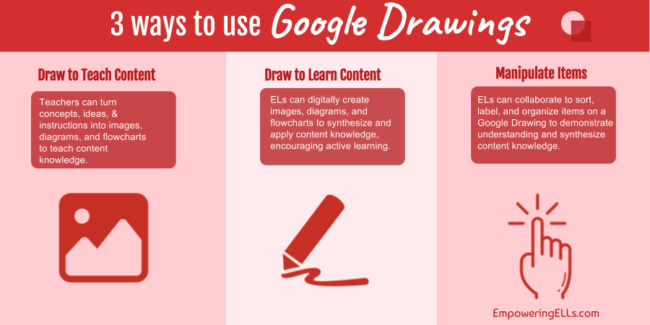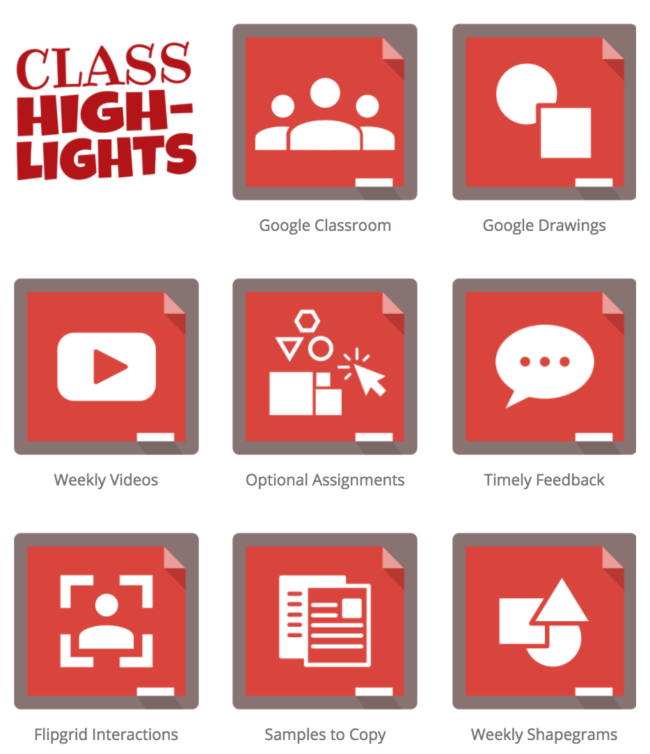My students think I work for Google. I can be heard saying, “Google Drive your work so you don’t lose it”, “Oh, you can use Google Drive to…”, “Thank goodness we have Google Drive”. Google doesn’t pay me, but I should be paying it for its suite of educational services that double as co-teachers of instruction.
Google’s cloud-based services help me co-teach in a number of ways. Here are just a few examples:
- I distribute work through Google Classroom
- we create graphs for science lab reports in Google Sheets
- students present their ideas in Google Slides
- students gather data through Google Forms, annotate on Google Docs, and collaborate on all Google apps.
When I saw Tony Vincent’s tweet about his Google Drawings course called Classy Graphics, I had to join. Before I enrolled in Classy Graphics, I thought Google Drawings was just the Google version of Piktochart or Canva with a lot less functionality. But as I participated in the lessons and completed the learning experiences, I’ve come to realize how functional and effective Google Drawings can be for instructing ELs. Which is why it’s now the subject of this article, part 15 of the Transforming Instruction Through Technology series.
Draw to Teach
In real estate, it’s all about location, location, location. When working with ELs, it’s all about visuals, visuals, visuals.
Visuals are one of the fastest ways to communicate information and concepts. When collaborating with content teachers, I usually find that their instructions are too complex even for non-ELs. When this happens, I turn their instructions or steps into a visual.
For example, Mr. Lucas and Ms. Lauren are Individuals and Society teachers (IB speak for history teachers). They wanted students to evaluate statistics for an assigned region. When they came to co-plan, Mr. Lucas and Ms. Lauren had a list of instructions that was confusing even for them. I suggested creating a flowchart to visually represent the steps. So we added the image below to the task sheet for all students to use because it was so easy to understand.
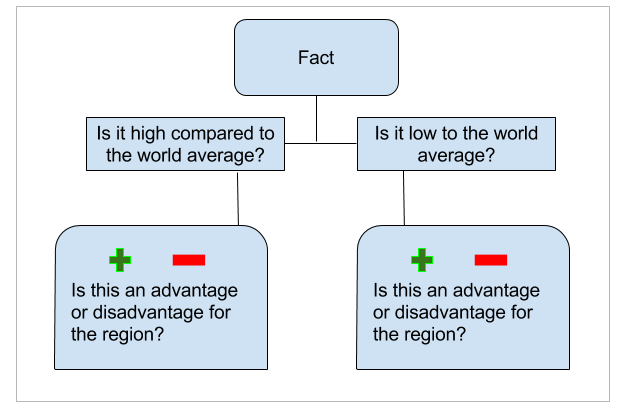
I created this on Google Drawings within Google Docs. It’s not fancy – just simple lines, text boxes, and a few icons. However, the flowchart coached all students through the learning experience.
I encourage you to turn a concept, steps, or instructions into images with Google Drawings. Images are a fantastic avenue for ELs to access content and understand expectations, bringing words to life.
Draw to Learn
In addition to being a tool for teaching instruction, Google Drawings is also a tool for student learning. If you’re a regular reader of my blog, you’ll know that I’m a champion of using technology to create – not just to understand and memorize information. Just as teachers use Google Drawings to teach information, students can use Google Drawings to synthesize information and create from their understanding.
For example, Mr. James, another Individuals and Society middle school teacher, wanted students to learn the parts of a river. After teaching the words, he asked students to find images of rivers they had chosen, upload them into a Google Drawings, and then label their rivers with the parts of the river that they just learned about.
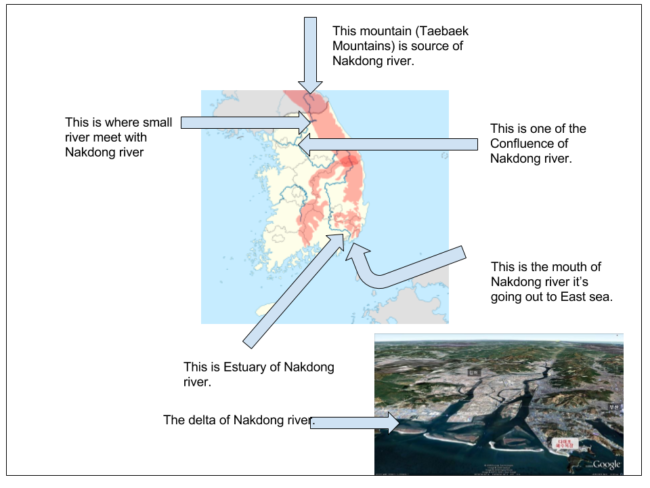
Instead of memorizing the parts of the river, ELs created from their understanding of content knowledge. Google Drawings morphed from a digital platform, a potentially passive, low-order activity, into an active, higher-order thinking learning experience.
I encourage you to provide opportunities for ELs to create images that require application of content knowledge. Doing so is one of the most effective ways to:
- Gather formative data
- Make learning active
- Teach content knowledge
Sort, Label, Collaborate
I had thought that the ability for teachers and students to create images with Google Drawings was the extent of this app. However, in Tony’s Classy Graphics course, I learned that Google Drawing can be used to:
- Sort information
- Label images
- Collaborate with others
In Google Drawings, there’s a blank canvas where we create. However, there’s also a gray area that sandwiches the canvas. Tony taught us that we can use the gray area to place items for students to manipulate. ELs can drag the items to sort, organize, and group ideas together. With this function, ELs can even move items to label images.
In the Google Drawing created by John Sowash (a fellow classmate in the Classy Graphics course), students can move the green event boxes, the pink war boxes, and the yellow person boxes to their respective places on the timeline to demonstrate understanding of the history content.
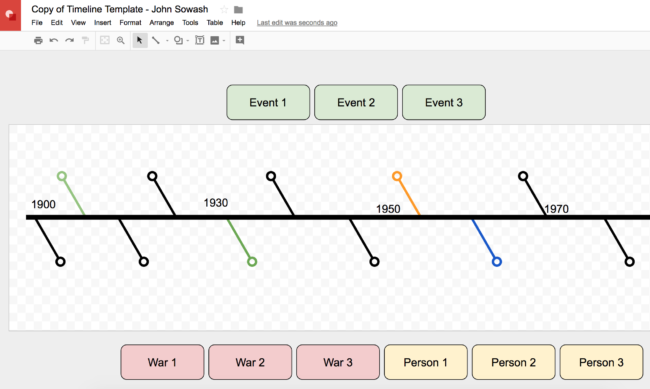
John Sowash
Another Classy Graphics classmate, Tamara Thompson, created this beautiful Google Drawing to teach math visually by having students manipulate digital coins. Tamara’s example, in particular, lowers the language barrier for ELs. Normally, these questions would be written as sentences in a word problem. However, with Tamara’s Google Drawing, students visually understand their task and have fewer complex sentence structures to sort through.
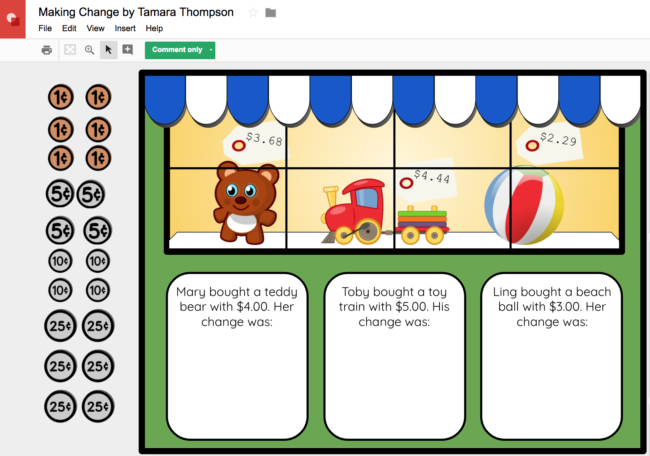
Tamara Thompson
In both John’s and Tamara’s Google Drawings, students have the ability to collaborate with other students to complete their work. This provided an added level of scaffolding while simultaneously cultivating creative thinking and oral communication skills. Students can go into the “Share” function and allow a friend to collaborate.
Finally, another Classy Graphics classmate, Rita Ayers, created this Schedule Request on Google Drawings to schedule class visits. She shared this with her fellow teachers, who love to fill out the cards according to their schedule. The best thing about this is that there are no more emails flying back and forth to schedule class visit times and it resolves double booking conflicts.
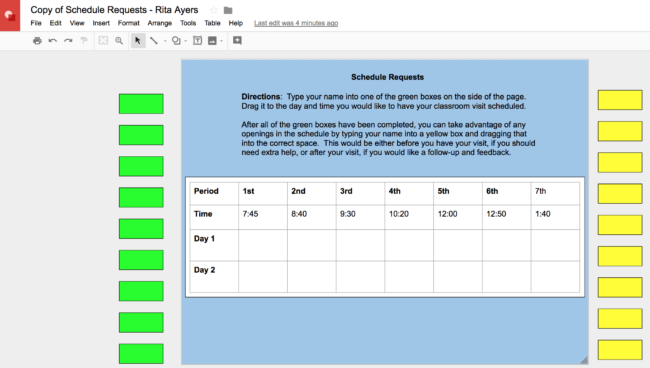
Rita Ayers
For ELs who are beginning their journey of learning English, Google Drawing makes learning less stressful and makes them feel more capable because of the sorting, labeling, organizing functions.
Takeaways
When we first open up Google Drawings, it’s a simply blank canvas. But with this empty canvas, there are rich opportunities for students to demonstrate their understanding, for teachers to teach content visually, for beginning English learners to learn through sorting and labeling, and for users to collaborate.
Google Drawings reminds us that tech is a tool for learning and creating, not just a means of entertainment. I know that tech can be a scary thing for some teachers, but when you witness how alive and empowered ELs become through technology, you become more inclined to find ways to meaningfully integrate tech in your classroom.
If you’re interesting enhancing learning for ELs by integrating technology, please consider reading ELL Frontiers: Using Technology to Enhance Instruction for English Learners by Heather Parris, Lisa M. Estrada, and Andrea Honigsfeld. By purchasing the book, you also support this blog.

